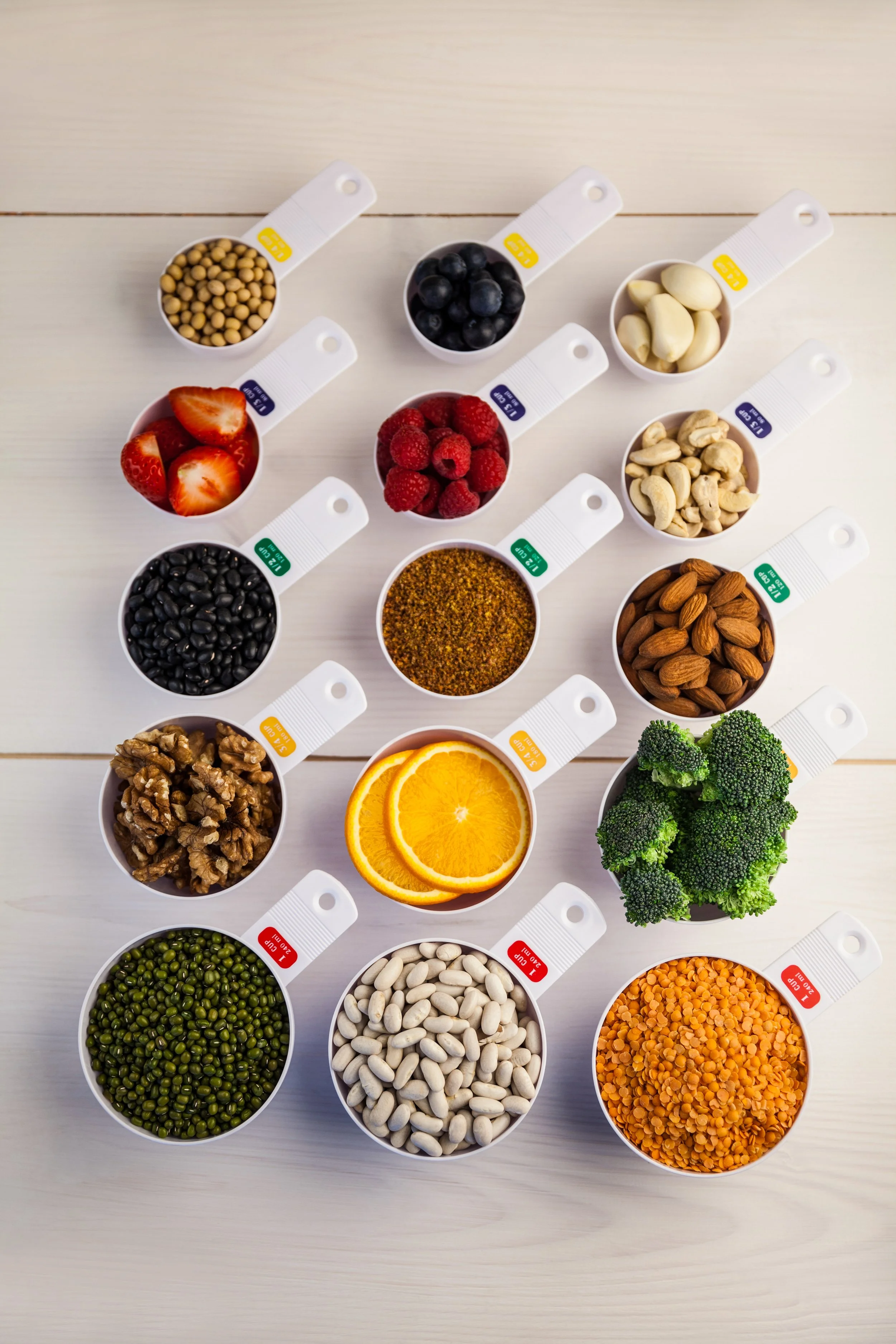Are You Eating Enough to Lose Fat? The #1 Mistake Most Women Make
Are You Eating Enough to Lose Fat? The #1 Mistake Most Women Make
Okay I’m about to say some things that might sting a little.
Most women who are “doing everything right” to lose fat… aren’t actually eating enough to lose fat sustainably.
Yes, hormonal conditions like PCOS, thyroid disorders, and menopause can influence your metabolism and fat oxidation efficiency.
But they can’t break the laws of thermogenesis.
At the end of the day, energy balance still rules the game.
What can happen, though, is that years of chronic under-eating, yo-yo dieting, and stress can make your body incredibly good at conserving energy, which makes fat loss feel impossible!!!
Let’s take a look at what might be happening.
Why “Just Eat Less” Advice Stops Working
When you drop your calories too low for too long, your body doesn’t go,
“Amazing, let’s burn stored fat!”~~~
It goes, “Oh hell no, we’re starving.”
This is called the adaptive thermogenesis or “famine reaction.”
Your resting metabolic rate slows, non-exercise movement drops (you fidget less, move slower, you even blink less - isn’t that wild), and thyroid hormones shift to reduce energy output.
Studies show this can lower total daily energy expenditure by 10–25%, even when calorie intake is identical!!!
Translation: your body burns fewer calories doing the exact same things.
That’s why the 1200-calorie grind might work for a few weeks, until it doesn’t.
The solution: Stagger your deficit in phases.
Spend 1–2 weeks simply tracking and observing your current intake to establish your true maintenance level. Once you know that, create a modest deficit of 300–500 calories, not a crash drop. Adjust only when fat loss genuinely stalls for two to three weeks. This keeps your metabolism responsive and prevents adaptive slowdown.
Leptin Resistance & Hunger Signalling Gone Rogue
Leptin is your satiety hormone, telling your brain when you’ve eaten enough.
But when calories stay low for too long, leptin levels drop, hunger ramps up, and your brain drives you to seek more food.
Over time, this can create leptin resistance, your brain stops “hearing” the full signals, leaving you hungry even when energy intake is adequate.
It’s one of the main reasons chronic dieters find themselves constantly thinking about food or losing control during unstructured days.
The solution:
Feed your body enough protein, carbs, and total calories to maintain healthy leptin levels. Schedule refeed days or diet breaks every 4–8 weeks if needed, especially during longer deficits. Prioritise sleep (7–9 hours) and manage stress, as both directly affect leptin sensitivity.
“Dieting” Without Actually Being in a Deficit, uh oh..
Here’s a hard truth: most people who swear they’re eating 1200 calories a day… aren’t.
Not because they’re lying, but because under-reporting is nearly universal.
Research from the American Journal of Clinical Nutrition found that self-reported calorie intake can be off by up to 47%.
When you’re “picking bits and pieces,” not tracking cooking oils, sauces, licks, sips, or bites, it adds up soooo fast.
So you end up mentally in a deficit (feeling restricted, tired, and frustrated)… but physically still eating at or above maintenance.
That mental stress of “feeling like you’re dieting” spikes cortisol and fatigue, even when your body isn’t truly in a deficit.
The solution:
Use a food scale and log everything… sauces, oils, condiments, bites, and sips, for at least two weeks. The goal isn’t to obsess, it’s to build awareness of what your actual food habits are. If you hate tracking, use structured meal templates with balanced portions (protein + fibre + starch + fat) to create natural calorie control.
The Weekday–Weekend Crash Cycle
This one’s sneaky, and it’s the reason so many women think their metabolism is “broken”, I’ve seen it more times than I can count with new clients that come to me for coaching.
You push hard Monday to Friday: tiny portions, skinny salads, black coffee for breakfast, maybe 1200–1400 calories a day.
By Friday night, you’re exhausted, hungry, and mentally done.
So you relax the reins a little.
A drink, a takeaway, brunch, a glass of wine, a few snacks, you think to yourself, “it’s nothing crazy.”
But physiologically?
Those two higher-calorie days can often be enough to offset the weekday deficit.
Across the full week, your average intake often lands right back at maintenance or above.
That means all you’re really achieving is five days of metabolic stress followed by two days of recovery eating…which keeps you stuck hovering around the same weight for months on end.
Your body’s just doing what it’s designed to do after prolonged restriction: refuel and protect.
The solution:
Stop “earning” your weekends. Instead of aggressive restriction Monday to Friday, raise weekday calories slightly so you’re satisfied and consistent all week. Plan one higher-calorie “social” day intentionally and adjust your weekly average rather than swinging between famine and feast. Consistency over seven days always beats perfection for five.
The Stress–Fat Connection
When your body perceives chronic stress, whether from low calories, overtraining, sensory fatigue, or emotional overload, it releases more cortisol.
Cortisol isn’t inherently bad, we need it, but when it stays elevated, it increases appetite, promotes water retention, and pushes your body to store fat around the midsection.
Your system’s message is clear: “I don’t feel safe enough to burn.”
That’s why in The Power Curve Method, we focus on improving recovery, nourishment, and metabolic resilience, not just hammering the deficit.
The solution:
Support recovery as much as you support training. Eat enough carbohydrates to blunt chronic cortisol elevation, keep training blocks periodised with deloads, and add genuine rest days. Incorporate low-intensity movement (walking, yoga, breath work) to help regulate your nervous system.
Fat loss happens when your body feels safe enough to adapt.
How Much Should You Eat to Lose Fat Sustainably?
Find your optimal intake here 👇
This calculator estimates your total daily energy expenditure (TDEE) and helps you set a deficit that supports fat loss without crashing your metabolism or hormones.
Fat loss is relatively simple, it’s about creating the right conditions for your body to feel safe enough to let go of stored energy.
That means fuelling well, recovering deeply, and avoiding the chronic under-eating cycle that so many women mistake for discipline.
Before you slash calories again, check your numbers.
Feed your system.
Train hard because you’re fuelled, not to earn your food.
Hey there, I’m Rachel!
NUTRITIONIST, PERSONAL TRAINER, WELLNESS COACH
If you’re ready to ditch the all-or-nothing mindset and build a strong, confident body—you're in the right place.
✨ Start with my free 5-day Mini Mindset Reset to design a healthy lifestyle that actually fits your life.
🍑 Or join The Power Curve Method, my signature hourglass training program built to shape your glutes, waist, and mindset from the inside out.
While we make every effort to make sure the information in this website is accurate and informative, the information does not take the place of medical advice.


